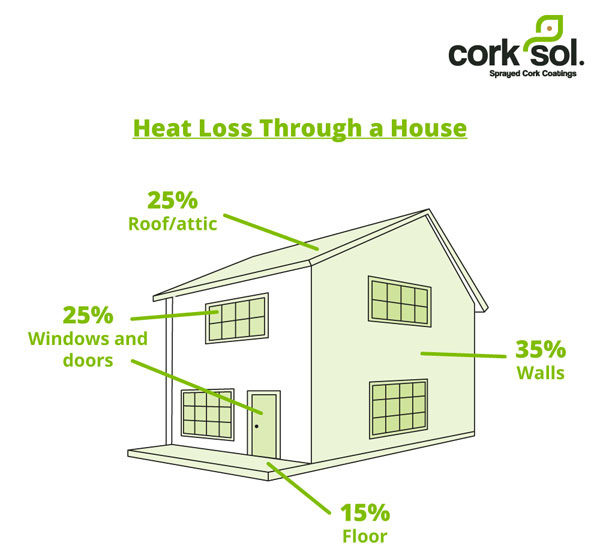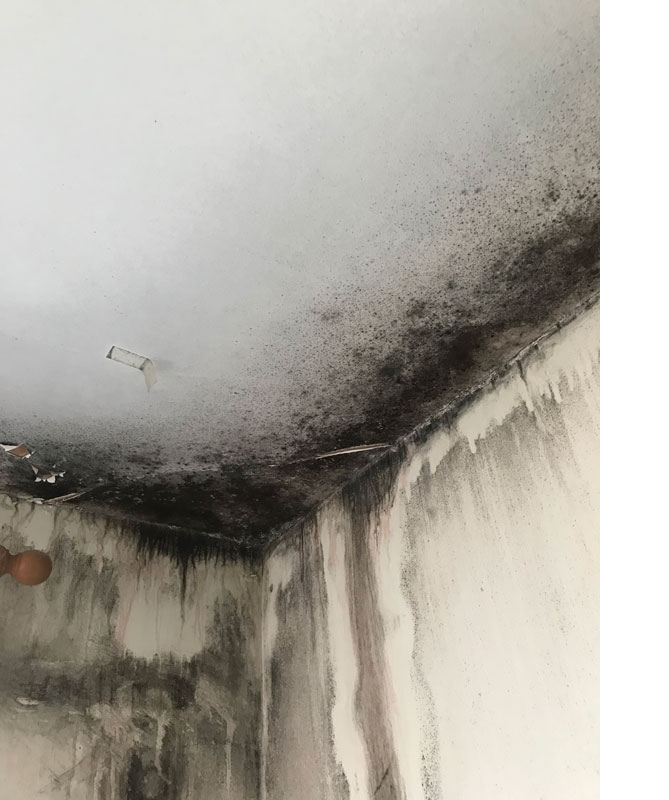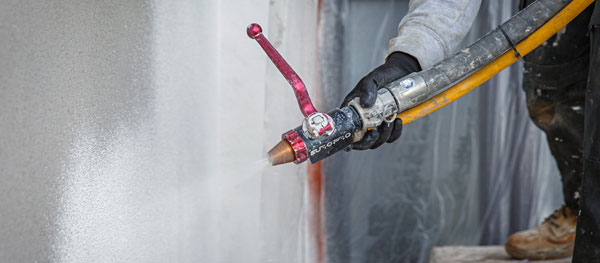For many home owners and tenants, the increase in energy bills is causing real concern, with many facing the tough choice of heating their home or being able to afford to eat. And whilst we begin to look towards the spring and the upturn in weather the problem isn’t going away.
The Poor State of Insulation
Britain’s existing housing stock is the oldest in Europe, which means that many properties don’t have any insulation – in fact, only about 50% have cavity or solid wall insulation.
Whilst heat loss occurs throughout all houses, it happens faster in poorly insulated homes. So with no insulation, the existing stock of houses aren’t as energy efficient as they could, and should, be.
It’s generally considered that walls account for about 35% of the heat lost from the home, and 25% is through the roof. Without adequate insulation, homes are not able to retain heat inside the home, making it harder to maintain a comfortable temperature, with World Health Organisation 2018 guidelines recommending that a minimum temperature of 18°C is a “safe and well-balanced indoor temperature to protect the health of general populations during cold seasons”. On top of the health issues associated with cold temperatures, energy bills rise as thermostats are turned up higher and are left on for longer. And with the majority of heating systems being reliant upon fossil fuels, not only do energy bills increase but the impact on the planet is also significant.

 Condensation & Mould
Condensation & Mould
There is also a second problem that arises from this with the formation of condensation on cold surfaces, which can lead to problems with damp and mould. According to The English Housing Survey for Housing Quality and Condition1, 3.5 million occupied homes were not suitable and did not meet the Decent Homes Standard in 2020, with 4% having serious damp issues. In turn, this poses problems for your health, including respiratory infections, allergies, asthma, immune system issues and Long Covid related illnesses. In the social housing sector, this places the onus on landlords and housing associations to provide safe housing for their tenants.
Within the rented property market, a law come into force in March 2019 to ensure that rented properties are ‘fit for human habitation’ - meaning they are safe, healthy, and free from things that could cause serious harm. This new law, the Homes (Fitness for Human Habitation) Act 2018, helps tenants and landlords by making sure that their rental property isn’t causing them to live in dangerous or unhealthy conditions.
Black spot mould is not a new phenomenon, but it has not yet been dealt with. This could be down to cost or a lack of understanding. And with the current lack of housing, income has been directed to development projects, to increase the number of homes available. The downside to this is that the existing housing stock has been neglected. Whilst it is becoming apparent that there is a significant number of homes with black spot mould, tenants are still at risk and the fabric of the housing stock is at risk of damage and decay.
The Health Risks with Mould
Mould releases spores which produce allergens, irritants, and even toxic substances, which according to the NHS, can lead to allergic reactions, respiratory problems and even a weakened immune system. The risk is higher for babies, children, elderly people, and those who have existing problems with their skin, respiration, immune system, or are suffering from Long Covid.
Whether you’re a homeowner, landlord or housing manager, it’s clear that damp and mould are not something you should ignore. And older properties are at a greater risk of damp than newer homes as they tend to be less energy efficient.
The Size of the Problem
Whilst new houses are being built to improved standards, there are still an existing 25 million UK dwellings which are still potentially extremely energy inefficient and at risk of condensation – and it is reported that by 2050, 80% of these will still be in use. This will account for 99% of the overall housing stock.
So it is important to retrofit the existing housing stock to ensure they are able to provide comfortable, healthy homes. And this will come at a significant cost. Some housing associations are already planning major retrofit programmes for their existing house stock as they see the long-term benefits to their tenants and to the planet.

What are the Solutions?
Ventilation is key to eliminating condensation - otherwise moisture will start to build up onto cold surfaces. This will lead to black mould spots appearing, eventually leading to more serious damp problems occurring.
Adding wall insulation helps to reduce condensation as it moves the dew point, reducing the risk of moisture condensing on cold surfaces. However, it is important to ensure that the walls are breathable as this prevents heat passing through walls whilst still allowing moisture to escape.
There are a number of ways to insulate cold walls which can be internally or externally applied. These options include cavity wall insulation, external wall insulation, and internal wall boards. However, each of these solutions isn’t without its own issues, such as a lack of cavity. The downside of traditional internal insulation solutions is that they are typically applied at depths of 50 – 100mm, often causing small rooms to become even smaller. So, it becomes a trade-off between saving space or eliminating the cause of damp. In essence, it is replacing one issue with another as the reduction in space could be contrary to the Minimum Space Standards.
To ensure the existing housing stock is able to provide suitable habitation for the years to come, it is essential to retrofit with effective and long-lasting insulation that will help to improve the energy efficiency of the property and reduce potential health risks for the inhabitants.
With damp and mould impacting indoor air quality, and increasing or aggravating the risk of allergic reactions, respiratory problems and immune issues that come with mould, finding a solution that prevents these in the first place is crucial.
 SprayCork, from CorkSol UK, is a sustainable and eco-friendly sprayed cork coating for walls and ceilings which reduces heat loss though walls and eliminates mould and condensation. The advantages of applying SprayCork is that it can be applied internally or externally and helps to retain heat by trapping the warm air in the room which makes heating the house much more affordable. And because SprayCork is a completely breathable material, it is resistant to moisture and therefore eliminates damp and mould.
SprayCork, from CorkSol UK, is a sustainable and eco-friendly sprayed cork coating for walls and ceilings which reduces heat loss though walls and eliminates mould and condensation. The advantages of applying SprayCork is that it can be applied internally or externally and helps to retain heat by trapping the warm air in the room which makes heating the house much more affordable. And because SprayCork is a completely breathable material, it is resistant to moisture and therefore eliminates damp and mould.
The unique honeycomb structure of cork comprises countless pockets of air within the material itself. This gives it a long list of natural qualities, including durability, flexibility, sound insulation and thermal insulation.
And research has been done to back this up. When used as an internal wall coating, a sprayed cork solution has been proven to reduce heat loss through solid walls by 30%2, which is a significant amount of heat staying within the property.
Futurebuild 2023
We’re looking forward to exhibiting at Futurebuild 2023 and sharing our innovative coating with visitors who put innovation and sustainability at the core of their projects.
As the industry’s premier event, Futurebuild is focused on building a better future for the built environment, providing a stage for inspiring ideas, innovative solutions and knowledge sharing to drive sustainable construction and help us reach our goal of net zero.
We believe that as a society we must make better and more sustainable choices to protect our planet and are passionate about ensuring that the building materials used in the construction sector today, and tomorrow, are the most sustainable materials available and contribute to the reduction of carbon emissions throughout their life cycle.
We hope to see you on stand M64
www.corksoluk.com
- Log in to post comments













